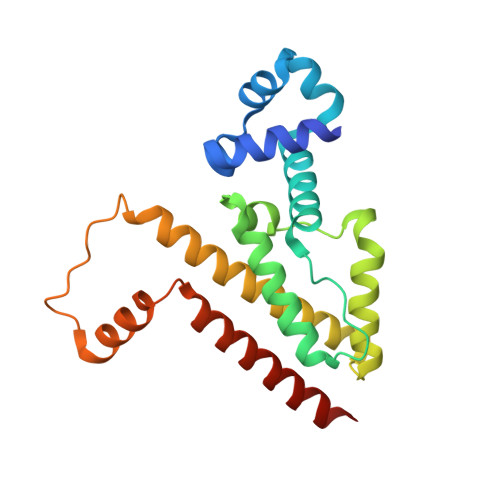A Protein Functional Leap: How a Single Mutation Reverses the Function of the Transcription Regulator Tetr.
Resch, M., Striegl, H., Henssler, E.M., Sevvana, M., Egerer-Sieber, C., Schiltz, E., Hillen, W., Muller, Y.A.(2008) Nucleic Acids Res 36: 4390
- PubMed: 18587152
- DOI: https://doi.org/10.1093/nar/gkn400
- Primary Citation of Related Structures:
2VKV - PubMed Abstract:
Today's proteome is the result of innumerous gene duplication, mutagenesis, drift and selection processes. Whereas random mutagenesis introduces predominantly only gradual changes in protein function, a case can be made that an abrupt switch in function caused by single amino acid substitutions will not only considerably further evolution but might constitute a prerequisite for the appearance of novel functionalities for which no promiscuous protein intermediates can be envisaged. Recently, tetracycline repressor (TetR) variants were identified in which binding of tetracycline triggers the repressor to associate with and not to dissociate from the operator DNA as in wild-type TetR. We investigated the origin of this activity reversal by limited proteolysis, CD spectroscopy and X-ray crystallography. We show that the TetR mutant Leu17Gly switches its function via a disorder-order mechanism that differs completely from the allosteric mechanism of wild-type TetR. Our study emphasizes how single point mutations can engender unexpected leaps in protein function thus enabling the appearance of new functionalities in proteins without the need for promiscuous intermediates.
- Lehrstuhl für Biotechnik, Department of Biology, Friedrich-Alexander University Erlangen-Nuremberg, Henkestrasse 91 and Staudtstrasse 5, D-91052 Erlangen, Germany.
Organizational Affiliation:


















